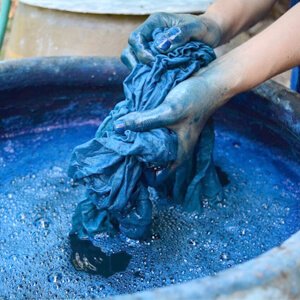Introduction to Fabric Dyeing and Printing
Fabric dyeing and printing have been integral to human culture for centuries, transforming plain textiles into vibrant works of art. These processes not only enhance the aesthetic appeal of fabrics but also convey cultural narratives and personal expressions. From traditional methods passed down through generations to contemporary techniques driven by technological advancements, the world of fabric dyeing and printing is vast and fascinating.

Read full article - Essential Fabric Printing Methods for Crafting Stunning Patterns
Traditional Dyeing Techniques
Traditional dyeing methods often utilise natural dyes derived from plants, minerals, and insects. One such technique is Batik, originating from Indonesia, which involves applying wax to fabric to resist dyes, creating intricate patterns. Another method is Shibori, a Japanese technique that includes folding, twisting, or bunching cloth and binding it, then dyeing to produce various patterns. These age-old practices not only showcase the ingenuity of early artisans but also highlight the sustainable use of natural resources in textile production.
Modern Dyeing Techniques
With technological advancements, modern dyeing techniques have emerged, offering efficiency and consistency. Digital printing allows for precise designs to be printed directly onto fabrics using computer-controlled printers, enabling complex patterns and multiple colours with minimal waste. Sublimation printing involves transferring dye onto fabric using heat, resulting in vibrant, durable designs. These contemporary methods have revolutionised the textile industry, providing designers with expanded creative possibilities.
Traditional Printing Techniques
Traditional printing methods have been used for centuries to embellish fabrics. Block printing involves carving designs into wooden blocks, applying dye, and stamping them onto fabric, a technique prevalent in regions like India. Screen printing uses a mesh to transfer ink onto fabric, except in areas made impermeable to the ink by a blocking stencil. These methods, while labour-intensive, offer unique textures and depth to fabrics, reflecting the rich heritage of textile craftsmanship.
Choosing the Right Technique
Selecting the appropriate dyeing or printing technique depends on various factors, including the type of fabric, desired design complexity, production scale, and environmental considerations. Natural fibres like cotton and silk may respond better to traditional dyeing methods, while synthetic fibres might require modern techniques. Understanding the strengths and limitations of each method enables designers and artisans to make informed decisions, ensuring the final product aligns with their creative vision and sustainability goals.
By delving into both traditional and modern fabric dyeing and printing techniques, we gain a deeper appreciation for the artistry and innovation that bring textiles to life. Whether preserving cultural heritage or embracing new technologies, these methods continue to inspire and shape the world of fashion and design.
Regards,
Fashion Articles by Waves Fashion Institute